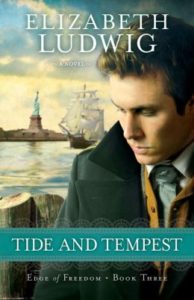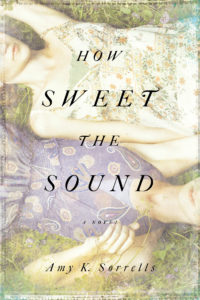Blog
Guest Post: Writing the Romantic Suspense Novel, by Lisa Carter
 1. The essence of any story is conflict and the tension produced by unmet desires. Conflict and tension are ratcheted higher in romantic suspense with life and death stakes.
1. The essence of any story is conflict and the tension produced by unmet desires. Conflict and tension are ratcheted higher in romantic suspense with life and death stakes.
2. Questions for the plotting process—What do my main characters want? What goes wrong? What’s at stake? What can I do to make it worse?
3. The point of view (POV) is usually confined to hero and heroine. And sometimes the third POV of the antagonist. Either hero or heroine will have the largest block of story time—ultimately, his or her story of discovery and transformation.
4. In a Christian worldview there are 3 story tension threads woven into the plot.
- Romantic tension thread—The protagonist must overcome certain obstacles threatening the relationship or love will die.
- Spiritual tension thread—The protagonist must come to grips with God’s invitation for relationship or something vital within the character will die.
- Suspense tension thread—The protagonist must find the killer or someone will die.
By novel’s end, the protagonist must experience an irrevocable transformation and resolution in all three areas to satisfy reader expectations.
5. The first chapter in Act 1 paints a portrait of the normal world of the main characters. 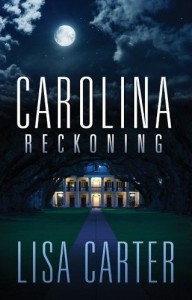 Make the main characters likable, but flawed and searching. If readers don’t like the hero and heroine, they will stop reading. Within the first few chapters in Act 1, turn the main characters’ world upside down with a pivotal crisis/point of no return. This becomes the problem that must be solved—which throws characters and readers into Act 2.
Make the main characters likable, but flawed and searching. If readers don’t like the hero and heroine, they will stop reading. Within the first few chapters in Act 1, turn the main characters’ world upside down with a pivotal crisis/point of no return. This becomes the problem that must be solved—which throws characters and readers into Act 2.
6. Each scene must escalate the tension or provide deepening insight into the character. Therefore, every scene/chapter ending should be unexpected; leave readers wanting more; compel them to turn the page and read one more chapter. Always leave a chapter with a question the main characters must answer, a choice to make, or in the middle of action.
7. The heart of suspense for the reader is the delectable anticipation/dread of the coming terror. Heighten the sense of the characters’ impending doom by inserting a countdown or deadline before tragedy strikes. Make readers care and worry about the characters.
8. Act 2 involves the protagonist taking steps to resolve all 3 threads of tension—to no avail and with intensifying pressure as things go from bad to worse. Every event must trigger a cause and effect in all 3 strands of tension—suspense, romantic, and spiritual storylines. Finally near the end of Act 2, the protagonist will make an attempt to resolve one or all of the issues, but this will end with disastrous results. This the black moment when all seems lost.
9. The depiction of violence in Christian fiction rule of thumb—imply more than you show. Disturb but don’t entice reader. Less is more. The act imagined is far more terrifying than if depicted.
10. Act 3 moves toward resolution quickly. Here in the last few chapters, the 3 threads of tension are resolved and woven together. The ending must be both inevitable (killer dies/brought to justice, romantic future consolidated) and yet contain an unexpected twist. Leave readers with a sense of hope and overriding grace—which translates into leaving them anticipating your next novel, too.
Thanks for hosting me today, Carla. Happy writing, everyone.
Connect with Lisa: Website | Facebook | Pinterest | Good Reads
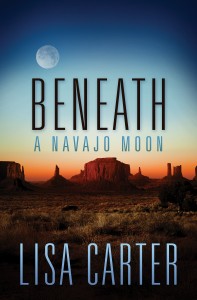 About Beneath a Navajo Moon
About Beneath a Navajo Moon
What happens when love and danger collide deep in the heart of the Navajo Nation? When cultural anthropologist Erin Dawson crosses paths with tribal policeman Adam Silverhorn, it’s hardly love at first sight. But when the two are suddenly thrust into a common quest to rout an insidious drug cartel—they must rely on each other for their survival. The danger mounts as Adam gives Erin a rare glimpse into Navajo life few outsiders ever see and into a crime ring that no one dares to imagine.
“Lisa Carter takes readers to a different world, one of poverty and struggle and one of majestic beauty as well. Don’t miss Beneath a Navajo Moon.” —Connie Mann, author of Angel Falls
“Against a backdrop of Navajo lore and cultural prejudice, two people find love while their worlds threaten to collapse. Lisa Carter has penned a romantic suspense that will keep the reader turning page after page.” —DiAnn Mills, author of Firewall
Order Beneath a Navajo Moon: Amazon | Barnes & Noble | ChristianBook.com
[author] [author_image timthumb=’on’]https://www.carlalaureano.com/wp-content/uploads/2014/03/LisaCarter.jpg[/author_image] [author_info]Lisa Carter is the author of two romantic suspense novels, Carolina Reckoning and Beneath A Navajo Moon; and Aloha Rose, a contemporary romance in the Quilts of Love series. Under a Turquoise Sky releases August 2014. She and her husband have two daughters and make their home in North Carolina. Lisa has strong opinions about barbecue, ACC basketball, and the Cola Wars. When she isn’t writing, Lisa enjoys traveling to romantic locales, quilting, and researching her next exotic adventure. www.lisacarterauthor.com[/author_info] [/author]
Tags: fiction, Lisa Carter, romance, Suspense, writing
Interview With Author Elizabeth Ludwig
I’m pleased to welcome back a repeat guest, historical romance author Elizabeth Ludwig! This makes me very happy for two reasons: 1) Elizabeth is beautiful, intelligent, and entertaining and 2) That means I didn’t actually scare her off the first time around.
Carla: So welcome back, Elizabeth! Last time, I think we were talking about the second book in your Edge of Freedom series, and now I have the pleasure of hosting you for the release of the third! Can you tell us a little about this new volume?
Elizabeth: Tide and Tempest is set in and around New York City, about the time that over twelve million immigrants were entering the United States through Ellis Island. It’s the story of a young Irish girl who must come to grips with the pain of her past while dealing with her anger toward God. Like the previous two books in the Edge of Freedom series, I’ve taken a departure from the typical Historical Romance and added a strong element of suspense.
Carla: What inspired this particular novel?
Elizabeth: To be honest, if everything had gone as I planned, this book would never have been written. You see, when I first proposed my idea to my publisher, I was only planning for a two book series. Later, I was asked if I could expand my idea. Of course I said yes, though at the time, I really wasn’t sure what the third book would be about. It wasn’t until I finished the first book, No Safe Harbor, that inspiration struck and I realized that everyone I’ve ever met has carried some kind of wound—either pain from a broken relationship, or grief, sometimes even loss. When I sat down to write Tide and Tempest, I wanted to reach out to those who were hurting and offer some kind of hope. To do that, I had to reach into my own past, and touch on the pain and guilt I carried after the loss of my son. The grace I experienced through that traumatic time, the healing and restoration that God fulfilled in my life—that was the inspiration behind Tide and Tempest.
Carla: I really respect the courage that it takes to turn a personal tragedy into something that can reach others in their own difficult times. It sounds like a particularly meaningful way to finish off the series. Now that you’ve concluded the Edge of Freedom, what can we look forward to next from you?
Elizabeth: I’m very excited to have a Christmas novella coming out this September. It’s called “One Holy Night” and it’s part of an anthology collection called Christmas Comes to Bethlehem, Maine (Barbour Publishing, 2014). The stories all revolve around a live nativity hosted by the residents of the town. My story in particular is about a young vet, struggling to find her place in the community, and the handsome widower who catches her eye.
After that, I’m hoping to continue in the Historical Suspense genre. I have a couple of proposals floating around that I’m hoping will find a home. Soon. LOL!
Carla: I think all your fans are hoping they’ll find a home soon as well! In the meantime, can you tell us what character in your most recent novel is most like you? Was that intentional, or did it just come about in the course of the writing?
Elizabeth: I think I would have to say Tillie McGrath from Tide and Tempest is most like me, which is funny, because as I explained above, hers was the only story that wasn’t planned. Not only has the book turned out to be my favorite, the love story between Keondric and Tillie has been the most fun to write.
Also, I share a common grief with Tillie—the loss of a child. I think that’s why she resonated with me so deeply. I really hope her triumph over guilt and grief speaks to readers.
Carla: Why did you choose this particular theme? What were you trying to say to your readers?
Elizabeth: To answer that, I think I would have to explain a realization I had not too long ago. I was doing a radio interview, and the host asked me what my books were about. “Besides the romance and suspense,” he said, “what would you say is the theme?”
Normally, I do all right in an impromptu interview, but the answer that rose to my lips surprised even me.
“Grief,” I said. “These books are about losing someone you love and finding the faith to go on.”
“Grief? Isn’t that sort of an odd theme for a romance?”
“Not really,” I replied. “True love, the kind that God gives, always involves sacrifice.”
After I’d had time to ponder that conversation, I realized deep down what I’d always known to be true. These books are about loss, but not the crippling, demoralizing, paralyzing kind. They’re about cutting away everything that hinders us from relying fully and completely upon Jesus. They’re about entrusting the people and things we love most in the world to Him. And they’re about learning to cast aside every unspoken fear and throwing ourselves on the infinite grace and mercy of the Savior. That is what I hope readers will take from these novels.
Carla: Wow. That’s an unexpected insight for a radio (or a blog) interview, but I agree with you. I like to write broken and wounded people as well, because only through brokenness can there come true healing.
Here’s another unusual interview question then. Fill in the blank: I will consider myself a successful author when I __________________. (Or, I consider myself a successful author because I __________________.)
Elizabeth: This question actually made me sad for a moment, because I realized that somewhere along my publishing journey, I had inflicted too many provisions on what I considered to be success. My prayer when I first started writing was simple—Lord, please help me to get published, and let my words touch someone’s heart.
Oh, how that prayer has changed over time! After my first book contract, I quickly discovered how unpredictable the publishing industry can be (an article for another time). The joy of holding my first published book disintegrated when I learned that the subsequent two books in the series would not be published as had been promised, and I added this line to my prayer—Lord, please help me to get published, and let my words touch someone’s heart, and let there be another contract.
Proving His love and faithfulness, God did provide another contract. I remember celebrating with thanksgiving the upcoming Christmas novella that would allow me to tell the story of my walk into adulthood. But then the book cover came, and I realized that readers would need a microscope to read the teeny-tiny letters of my name beneath the big, bold letters of the lead author, and I added this line to my prayer—Lord, please help me to get published, and let my words touch someone’s heart, and let there be another contract, and someday, Lord, let my name be the prominent one on the cover.
Since then, I’ve added many lines to that first simple prayer. Weights like good sales numbers, positive  reviews, and contest awards encumber what was once a sincere desire. God reminded me of this during a dark period of wrestling with Him over the path I was to follow. Now, I measure success not by contracts or sales numbers, but in my level of obedience and my striving to please Him.
reviews, and contest awards encumber what was once a sincere desire. God reminded me of this during a dark period of wrestling with Him over the path I was to follow. Now, I measure success not by contracts or sales numbers, but in my level of obedience and my striving to please Him.
Carla: It’s a hard lesson to learn, and as a new author, I think I’m still figuring this one out myself. Let’s move on to the fun questions now.What does your writing cave look like?
Elizabeth: My husband and I both love old houses, but neither of us were fans of the repairs that typically come with them—things like rusty plumbing, bad wiring, and no closets. That’s why we were thrilled to find a home in a nearby community that had been built to resemble an old-fashioned southern plantation home, but with all the modern conveniences. The front room, which I affectionately refer to as my parlor, is my favorite place to write, and this red chair, the ideal writing nook.
Carla: What book had the biggest impact on you as a reader? As a writer?
Elizabeth: Oh my goodness…I know this answer is going to baffle most people but…I have to say the book (and the character) that impacted me most is No Flying in the House by Betty Brock, and the child/heroine of the story, Annabel Tippens.
Annabel is a little girl “with short blond hair and very good manners” (taken from the book description on Amazon.com). She seems quite ordinary, except that she’s also half fairy—and instead of parents, she has a two-inch high dog named Gloria.
Well, you can imagine that for a kid who loved to read, this book was extraordinary. I read it over and over again and dreamed of the day I would learn to fly. Later, I came to realize that what captured my imagination was not so much the story of a half-fairy princess, but of a little girl struggling to find herself. The sacrifices that Annabel Tippens makes challenged me to acknowledge what was real and important—love, faith, and family.
Carla: Coffee? Tea? Hot chocolate?
Elizabeth: This is a tough one because I love all three, but when I need focus and energy, I stick to coffee. Black. And strong. Stop by! I’ll put a pot on. 🙂
I will most definitely take you up on that. Thank you so much for visiting today, and I hope you’ll come back soon! And for our readers, Elizabeth is including your choice of any of her Edge of Freedom books in my Winter Warm-Up Giveaway. Less than two weeks to enter, so don’t forget to leave Elizabeth a comment below and check out your other entry options at the bottom of the page. ***Contest is now closed***
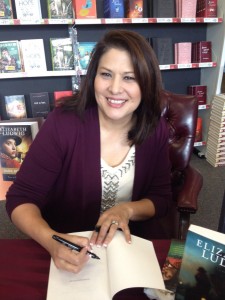 About Elizabeth
About Elizabeth
Elizabeth Ludwig is the award-winning author of No Safe Harbor and Dark Road Home, Books One and Two in the Edge of Freedom series. Her popular literary blog, The Borrowed Book, enjoys a wide readership. Elizabeth is an accomplished speaker and teacher, often attending conferences and seminars where she lectures on editing for fiction writers, crafting effective novel proposals, and conducting successful editor/agent interviews. Along with her husband and children, she makes her home in the great state of Texas.
Connect with Elizabeth: Website | Facebook | Twitter
About Tide and Tempest
Two years ago, her fiance perished during their voyage to America. Now she discovers it may have been murdered.
Dreaming of a better life, Tillie McGrath leaves Ireland behind and, with her beloved fiance by her side, sets sail for America. But when illness robs her of the man she holds dear, she’s left alone with only a handful of tattered memories. While forging on proves difficult, Tillie soon finds some new friends at her New York boardinghouse, and begins pursuing a new dream–to open a home for orphaned children.
Despite two years passing, Captain Keondric Morgan has never forgotten the lass who left his ship so heartbroken. When a crewman’s deathbed confession reveals her fiance’s demise was the result of murder, the captain knows he must try to contact her. But his attention draws the notice of others as well–dangerous men who believe Tillie has in her possession something that could expose their crimes. And to their way of thinking, the best way to prevent such an outcome is to seize the evidence and then hand Tillie the same fate as her naïve fiance.
Order Tide and Tempest: Amazon | Barnes & Noble | ChristianBook.com
Tags: Elizabeth Ludwig, Historical Romance, interview, Suspence, Tide and Tempest
What Makes A Romance Rec-Worthy?
 Today I’m chatting with Serena Chase, author and reviewer at USA Today’s Happy Ever After blog as well as Edgy Inspirational Romance. As someone who reads dozens and dozens of books a year, Serena knows romance, and she’s here today to share her impressions on what makes a book memorable and worthy of recommendation to her readers.
Today I’m chatting with Serena Chase, author and reviewer at USA Today’s Happy Ever After blog as well as Edgy Inspirational Romance. As someone who reads dozens and dozens of books a year, Serena knows romance, and she’s here today to share her impressions on what makes a book memorable and worthy of recommendation to her readers.
Carla: Out of all the components in a romance novel, what’s the first thing that stands out to you as being “rec-worthy” about a book?
Serena: Pace. When a plot and its characters are so enthralling (whether through action or relational interactions) that it is painful to put the book down and see to “real life” — that is a book I want to recommend.
Carla: Ah, yes. I think for me, it’s when the characters are real and take on living status in my imagination. I can’t even imagine putting the book down because they might get themselves into trouble while I’m gone and I’ll miss it. Those are the books I recommend to my friends.
Serena: Yes! I agree. It’s such a silly thing. I mean, it’s a book. The pages are static and sure to be unchanged when you return, but it just doesn’t feel that way sometimes! As an author, pace is one of my struggles, so when someone gets it right, I drool. (Beta reader feedback is telling me I’ve done a bit better with that on my next release. *winks* Pirates make it easier, I think.)
Carla: Ah yes, stop teasing me about The Seahorse Legacy until I can read it. I loved the first two. Anyway…sometimes I think authors get themselves into trouble because they don’t realize that all books are plot driven, even romance. Unless you’re writing experimental literature where a guy wanders around Dublin thinking in circles (wait, that’s already been written), you really do need to have stuff happen in the plot. But that does not necessarily mean that you have to have a stalker subplot or literal action in the book. Authors can keep the pace moving by continually upping the stakes, even if that’s just on the characters’ personal internal struggles. (Insert shameless Five Days in Skye plug here… hey, you got to do it!)
Serena: *laughs* Absolutely. As you well know, I’m a fan of those personal internal struggles you write so well. I have a hard time being drawn into books, even fantasy—which I love— if they are relationally/emotionally weak. I need relationships! Interaction! Okay, I’m going to take a risk of sounding like a chauvinist –but anything I would call a “boy book” is not going to hold my attention very long. To me, “boy books” (*cringes* I’ve called them that for years because they are the sort of books my brainy brother used to love. They are not necessarily written by, about, or for boys) are all about the mapping and politics of a world, and although those things might be masterfully presented, I’m a girl who thrives on the relational aspect of a story. I want to know the people. Really know them, you know? Give me great characterization within a superb and driven plot, add in a bit of romance—or a lot!—and I’m all yours.
Carla: So, fantasy writers–take note–throw some romance in there so you can catch Serena Chase’s eye…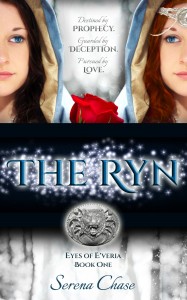
Serena: Yes, please! Better yet, grow a really deep and true romance in your story and you’ll not only catch my eye, but my heart, as well. For review and book recommendation purposes, my writing venues require a strong romance thread in the plot. I will, of course, read a book [for Happily Ever After]with only the promise of romance for review purposes, but if it doesn’t deliver . . . sorry. It just doesn’t fit the HEA audience demographic (although I do occasionally feature those books at EIR, where Joy & I are the boss ladies.)
Carla: Back to what you said a minute ago about boy books, I totally understand what you’re saying. Really, I think that writers would be better off not thinking of their book as a “chick book” or a “boy book” but a person book. I think the temptation is to say “my target market likes this” and then throw whatever clichés and tropes you can think of. You want to know your readership, of course, but when the plot and characters develop organically with real people, it will not only appeal to the target market but expand beyond that. Even guys can enjoy a love story if it’s not heavy on the cheese.
Serena: I am lactose intolerant in life and literature! No cheese, please! But I sincerely agree that men can enjoy a good love story just as well as women can enjoy a political thriller—if they would give it a chance. (I do hope men start reading more romance. I think they could learn a lot about us girls… but that’s another subject for another post, eh?)
But I think ebooks are making it easier to avoid pigeonholing books as “written for men” or only for women. What “guy’s guy/manly man” wants to be seen toting around a book with a girly cover? I don’t even like carrying some of them around, and I’m a big fan of glitter and other girly things. *lol* But after seeing such a book cover, will a “man’s man” even pick it up to see if they might like the story premise and give it a whirl? Doubtful. Which it is why I adore e-books. They open up the romance market to people who might otherwise be embarrassed to be caught reading a romance novel.
Carla: Well, you clearly read a lot of books. What kinds of tropes do you see all the time that you think are overdone? And what, as a reviewer, would you like to see more of in romance?
Serena: I’m getting pretty tired of western sassy girl meets handsome sensitive cowboy, but that could just be me, though. I have nothing against sassy girls or cowboys. I just see them a lot. And oh! This strange thing I’ve seen popping up of “everyman” protagonists (in Westerns) interacting with famous historical figures (sometimes multiple figures)? That really jolts my suspension of disbelief.
I’ve also noticed a few instances of writing “edgy for edgy’s sake” in both historical romance and contemporary, rather than grafting that sort of content into the story in a way that shows craft and purpose behind its inclusion. To me, that is gratuitous and it comes off as contrived. I won’t name examples, because the inspy romance community is a small world and I’m not a fan of burning bridges or hurting feelings, but I have declined reviewing several books due to that sense of “contrived content.” I would like to see “real” Christians interacting in a real, flawed world with believers and unbelievers alike. I want their struggle to be real—even if it’s a rom-com—, and I want them to make some terrible, but redeemable choices on their way to a satisfying ending.
Carla: I have to say, I don’t mind a cowboy hero, but I’m definitely a “variety is the spice of life” sort of reader. And I’ve come across several great Christian books that do exactly what you’re talking about. I’m optimistic that we’ll be seeing more to come. What about the topics you’d like to see more of?
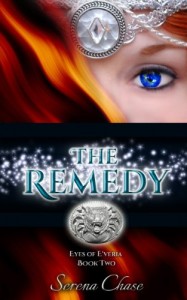 Serena: Well-written Contemporary Romantic Comedy. I’m simply thirsting for it. I recently talked to several book blogging friends about its absence, and as it turns out, I am not alone in wanting more. BOOK BLOGGERS MISS ROM-COM IN INSPY! (are you listening, publishers?) *crosses fingers* I’m really hoping the summer releases several of those onto my Kindle!
Serena: Well-written Contemporary Romantic Comedy. I’m simply thirsting for it. I recently talked to several book blogging friends about its absence, and as it turns out, I am not alone in wanting more. BOOK BLOGGERS MISS ROM-COM IN INSPY! (are you listening, publishers?) *crosses fingers* I’m really hoping the summer releases several of those onto my Kindle!
Carla: Ah, me too. I’ll be watching for your recs to see what you’re reading. I could use some summer fun myself!
And readers, if you’d like to catch up with Serena, you can find her on the web, either at her website, at USA Today’s Happy Ever After blog, or Edgy Inspirational Romance.
And don’t forget to check out my reviews of Serena’s The Ryn and The Remedy. These are two of the most original fairy tale retellings I’ve seen in a long time, and I enjoyed them immensely.
Thanks for joining me today, Serena, and happy reading!
Tags: book reviews, Happily Ever After Blog, Serena Chase, The Remedy, The Ryn, USA Today
Interview With Author Amy K. Sorrells
I’m excited to introduce my friend and fellow David C. Cook debut author, Amy K. Sorrells. It was my great pleasure to meet Amy at ACFW last year in Indianapolis, and my even greater pleasure to be currently reading her first novel How Sweet the Sound.
Carla: Welcome, Amy. Can you tell us a little about your book?
Amy: How Sweet the Sound is a story of a family full of generations of tragedy, and how each individual emerges—or doesn’t emerge—from it in the long, hot summer of 1980.
Carla: What inspired this particular novel?
Amy: This story was inspired by the story of King David’s daughter Tamar, whose devastating story is told in II Samuel 13. I had a conversation with God about why, after Tamar was raped by her brother, all the Bible says afterwards is that she “went on to live in desolation.” I know God doesn’t want broken people to live in desolation, and that He wants—indeed, promises—we can live in joy and freedom. And so, while careful to say I am in no way “adding to the Bible,” I wanted to imagine what Tamar’s life might have been like, if she could experience the freedom and lovingkindness offered by Jesus. I set the story in more modern times to make it more relatable, and that’s how my novel was born.
Carla: The book definitely deals with some heavy topics, but I can say that you handle them with both raw honesty and delicacy. Not an easy balance to find, especially for a debut author! What can we look forward to next from you?
Amy: I’m currently in the middle of edits for my second novel, due to publish in spring, 2015, which features a 94-year-old man near the end of his life who escaped the Jewish pogroms of turn-of-the-century Ukraine, and whose daughter learns for the first time about what he suffered, even as his mind slips further into dementia. Together, they learn how God never leaves His people and that He truly does see all our wanderings and seals our tears in a bottle. (Psalm 56:8)
 Carla: Now for the fun questions.What song/album most influenced the writing of your current/most recent book?
Carla: Now for the fun questions.What song/album most influenced the writing of your current/most recent book?
Amy: I wore out all the 1970’s Pandora stations while writing the first draft of this book, as well as a couple of the Cajun stations. I relied heavily on music of the era and locale to help me get into the mood and minds of my characters. Some of the early readers of my novel have commented on how much they enjoyed my references to music, and I think that shows how much music impacts our lives, even when it’s not audible and in writing.
Carla: What does your writing cave look like?
Amy: See attached picture! 🙂 My Dad and I worked together to build these shelves and the window seat. I’ve always dreamed of having a room that looks just like that, and I smile every time I walk in, even though my dogs think the window seat was built just for them.
my dogs think the window seat was built just for them.
Carla: Coffee? Tea? Hot chocolate?
Amy: Coffee. Black with one Splenda. Every morning.
Carla: Dog, cat, or other pet?
Amy: Dogs. Three golden retrievers, to be exact. I try not to pick favorites between them, but here’s a picture of one.
Aww, how could you resist that face? No wonder you let them have the window seat. In any case, it’s a pleasure to have you here today, Amy, and I’m excited to announce that we will be including a copy of How Sweet the Sound in my Winter Warm-Up Giveaway, which ends in only a few short weeks. Don’t miss your chance for another entry into the contest by leaving a comment for Amy below. ***Contest is now closed.***
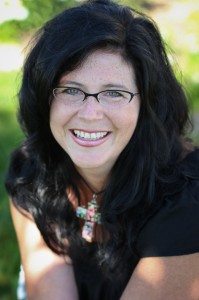 About Amy
About Amy
An Indianapolis native and graduate of DePauw University, Amy lives with her husband and three sons in central Indiana. A former weekly newspaper columnist, Amy has been a two-time semi-finalist for the ACFW Genesis awards, and was the winner of the 2011 Women of Faith writing contest.
Connect with Amy: Website | Facebook | Twitter
About How Sweet the Sound
A Southern Novel of Second Chances
From a distance, the Harlans appear to be the perfect Southern family. Wealth and local fame mask the drama and dysfunction swirling through their family line. But as the summer heats up, a flood tide of long hidden secrets surface.
Devastation from a rape followed by the murder of two family members brings three generations of the Harlans together on their pecan plantation in Bay Spring, Alabama. Chief among them is Anniston, who by the time she turned thirteen thought she’d seen it all. But as her heart awakens to the possibility of love, she begins to deal with her loneliness and grief.
This tender coming-of-age tale, inspired by the story of Tamar in 2 Samuel 13, shows how true healing and hope comes only from God. Though our earthly family can wound and disappoint, our heavenly Father brings freedom to those long held captive through His mercy and grace.
Order How Sweet the Sound: Amazon | Barnes & Noble | ChristianBook.com
Tags: Amy Sorrells, How Sweet the Sound, inspirational fiction, literary fiction, Southern fiction

